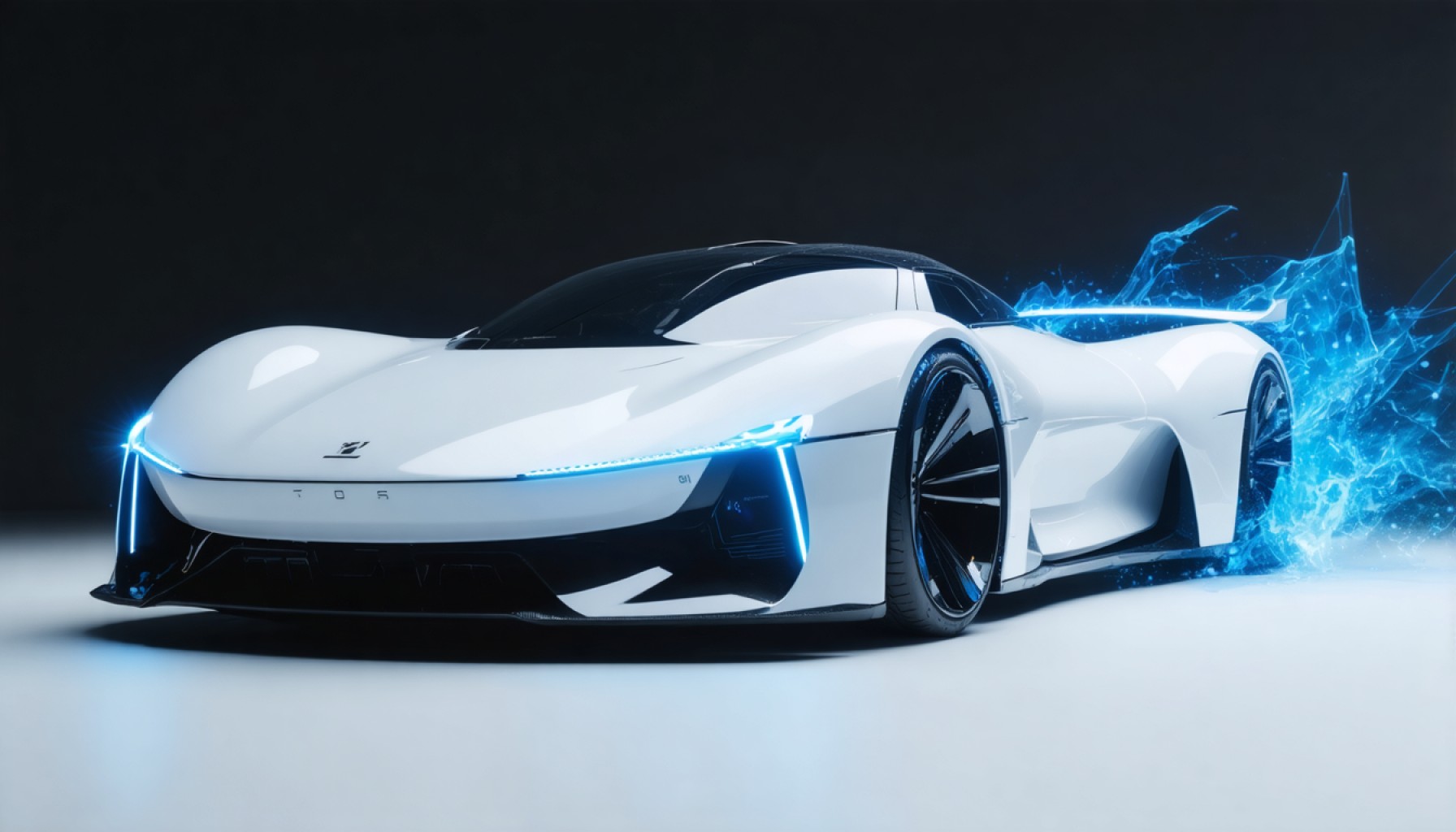- Stellantis and Factorial Energy introduce a landmark solid-state battery for the 2026 Dodge Charger EV.
- The innovative battery boasts an energy density of 375 Wh/kg, surpassing traditional lithium-ion batteries.
- Charging time is drastically reduced to 18 minutes for a near-full charge.
- Factorial’s FEST technology tackles weight and efficiency, with battery packs weighing 580 pounds.
- The battery operates effectively in temperatures ranging from -30°C to 45°C, enhancing versatility.
- A partnership with Mercedes-Benz highlights a cooperative effort in advancing the EV market.
- The upcoming electrified Charger promises a future where innovation meets sustainability.
A sleek Dodge Charger pulses under the floodlights, its soul no longer propelled by the rumble of a V8 but the quiet hum of cutting-edge solid-state batteries. A silent revolution revs its engine as Stellantis, in partnership with Factorial Energy, pushes the boundaries of electric vehicle (EV) technology, promising faster charging, longer range, and a sustainable future.
In the shadow of roaring giants, Stellantis rejoices with a monumental advancement: the validation of Factorial Energy’s solid-state battery for its upcoming 2026 Dodge Charger EV. This isn’t merely about an electric twist on an American classic; it’s a glimpse into the future of driving. The solid-state marvel boasts an eye-popping energy density of 375 Wh/kg, far surpassing the traditional lithium-ion technology that has long ruled the EV landscape. Imagine charging your car from almost empty to almost full in the time it takes to savor a quick cappuccino — just 18 minutes. This breakthrough is no mere lab experiment; it’s the next step on the open road.
Factorial’s FEST (Factorial Electrolyte System Technology) is more than just a complex acronym; it’s a transformative leap forward, designed to tackle the age-old issues of weight and efficiency. At 580 pounds, these battery packs lighten the load, offering an agile drive while cutting costs and extending range. This solid-state solution operates seamlessly across a temperature spectrum, from the biting chill of -30°C to the warm hum of a 45°C day, making it a versatile choice for diverse climates.
As Mercedes-Benz joins the charge, this collaborative synergy showcases a powerful alliance aimed at revolutionizing the EV market. Under the sleek hood of this Charger lies not just the potential for speed but the promise of a greener, more sustainable world.
With Stellantis planning an electrified Charger’s rollout in 2026, their vision captures the imagination. The age of solid-state batteries is no longer confined to futuristic fantasy—it’s on our doorstep, beckoning us toward a horizon where drive meets innovation, and the future is exhilaratingly electric.
The Silent Revolution: How the 2026 Dodge Charger EV Redefines Automotive Innovation
—
In-Depth Insights into the 2026 Dodge Charger EV
The 2026 Dodge Charger EV, powered by Factorial Energy’s ground-breaking solid-state batteries, marks a pivotal shift in electric vehicle technology. This move by Stellantis and their partner Factorial Energy paves the way for faster charging, greater range, and sustainable transportation. Here are more detailed insights and implications of this exciting development.
—
Solid-State Batteries: Transformative Technology
Key Features and Specifications:
1. Energy Density & Efficiency: With an energy density of 375 Wh/kg, the solid-state battery significantly outperforms traditional lithium-ion batteries. This allows for more energy storage in less space and weight.
2. Fast Charging: The ability to charge from nearly empty to almost full in just 18 minutes provides unparalleled convenience for drivers.
3. Temperature Resilience: Operating efficiently between -30°C and 45°C, these batteries cater to various climate conditions, assuring reliability across geographies.
4. Battery Weight: At 580 pounds, this battery is not only lighter but also contributes to augmented vehicle agility and performance.
—
Real-World Use Cases and Benefits
1. Environmental Impact: Solid-state batteries reduce the carbon footprint and enhance the sustainability profile of EVs, aligning with global efforts to mitigate climate change.
2. Consumer Convenience: Quick charging times make solid-state batteries ideal for urban dwellers and road trippers alike, reducing downtime and aiding long commutes.
3. Performance Applications: With improved power density and reduced weight, sportier applications in vehicles like the Dodge Charger promise exhilarating acceleration without fossil fuels.
—
Market Forecasts & Industry Trends
The push towards solid-state batteries indicates a shift that could soon dominate the EV field:
– Industry Predictions: Analysts forecast that solid-state technology may become standard in EVs by 2030 due to superior efficiency, safety, and charge speed.
– Market Growth: The global solid-state battery market is expected to grow at a CAGR of over 30% by 2027, driven by advances in technology and increased EV adoption.
– Collaborations and Investments: Alliances like Stellantis and Factorial highlight growing collaborative efforts to scale innovation.
—
Comparisons, Controversies & Limitations
Pros & Cons Overview:
– Pros: Enhanced safety (no liquid electrolyte), increased range and durability, lower weight, and faster charging times.
– Cons: Current high production costs, limited large-scale deployment, and challenges in manufacturing scalability.
Controversies: Though promising, questions around recycling and large-scale manufacturing of solid-state batteries remain hurdles.
—
Actionable Recommendations & Tips
1. Stay Updated: Follow automotive news to track the deployment of solid-state battery technology.
2. Consider EV Readiness: If considering a vehicle purchase, explore incentives for EVs, and assess home charging station options.
3. Monitor Market Trends: Investors and industry professionals should watch for shifts in market dynamics influenced by solid-state adoption.
—
For more information and updates on cutting-edge vehicle innovations and electric mobility trends, visit the official sites of Stellantis and Factorial Energy.
As the automotive industry accelerates towards an electrified future, the 2026 Dodge Charger EV exemplifies how technology can redefine tradition, offering a sustainable path forward energized by innovation.
